Although turn-of-the century photographer Louis Charles McClure's [b.1867, d. 1957] name remains relatively obscure, his cityscape pictures of Denver are among the most accurate and artistic depictions of any American city during the City Beautiful era. Having studied with noted photographer William Henry Jackson, McClure made a career of photographing railroads and landscapes throughout Colorado, but his most interesting work documented the Denver of the 1890's through the 1920's. McClure's artistry brought him considerable success as a commercial photographer during his lifetime. With his gift of over 4,000 glass plate negatives and prints to the Denver Public Library, today people are beginning to recognize McClure's distinctive signature as a sign of photography that is of great historic and aesthetic value.
This blog entry focuses on McClure's documentation of the City Beautiful Movement, which inspired urban beautification in architecture, landscaping and city planning in the United States from the 1890s through the 1920s. Influenced by the Beaux Arts architecture of Europe, American city-shapers designed civic centers, grand boulevards and parks in a quest for urban beauty. The City Beautiful model was "The White City" built at the 1893 World's Columbian Exposition, in Chicago, Illinois.
This was primarily an aesthetic movement, but its promoters felt that it would uplift the spirit too. The City Beautiful ideology also emphasized tourism, scenic values and boosterism. A popular poem from Denver's City Beautiful era reads:
Denver the beautiful, blest be her name
Hearts of her subjects with pride are aflame
Crowned with bright glory that never can wane
Denver the Queen of the Mountain and Plain.[ from: Denver Municipal Facts, 1910]
McClure's medium was the glass plate negative, a process which when done correctly, yields photographs of exceptional clarity and detail. McClure was a master of his field, and these City Beautiful photos only begin to explore the depth of his work. The photos in the gallery linked below showcase many of his other subjects, and with many of the photos, the zoom tool reveals startling detail even at extreme enlargements. This image of a dish of anemones is a good example of the detail available in many McClure photos.
At the heart of Mayor Robert Speer's City Beautiful dream for Denver was the Civic Center. Impressive neoclassical government buildings were to surround a flower-filled public park that would serve as the center for the city. A scaled-down version of the mayor's civic center plan was accepted, and the Greek Theater, Voorhies Memorial and the Colonnade of Civic Benefactors were completed in 1919.
Funded by the Andrew Carnegie Foundation, the Denver Public Library was designed as a three-story Greek Revival temple featuring open shelves, an art gallery and a children's room. This new library was a cornerstone for Mayor Speer's plan for a civic center based on the City Beautiful model. When it opened in 1910, city boosters declared that "the library will hereafter be one of the city's show places."
Hired to design a fitting monument marking the end of the Smoky Hill Trail, sculptor Frederick MacMonnies originally planned on topping his pioneer fountain with a bronze Indian. Denverites took such offense to this that the Indian was replaced by a figure of Kit Carson. Public sculpture, such as the Pioneer Monument, was a legacy of Denver's City Beautiful era.
Sunken Gardens Park was built in 1909 on the site of a city dump, at 8th and Speer, by landscape architect Saco DeBoer. Water was diverted from Cherry Creek to make the beautiful pool and waterfall that once graced the park.
The pavilion was designed by Denver architect Jacques Benedict.
White City's Big Splash ride and the 150-foot Tower of Jewels.
The White City (Lakeside Park) opened in May 1908 to 50,000 cheering people as Mayor Speer pressed a button and 100,000 lights lit up the night. The press billed it as "America's most beautiful amusement park" with swimming for all including "ladies with or without escorts."
The Colorado State Capitol, originally designed in the Federal Revival style by Elijah Myers of Detroit, was completed by Denver's Frank Edbrooke in 1904. In 1908, the dome was gilded with 200 ounces of gold leaf, and was to be topped with a sculpture of a beautiful woman -- but state officials couldn't agree on a model.
Mizpah Arch facing 17th Street at Union Station, bidding farewell to travelers.
At the dedication of Denver's famous Welcome Arch in 1906, Mayor Speer proclaimed, "It is to stand here for the ages as an expression of the good wishes and kind feeling of our citizens to the stranger who enters our gates." It was demolished in 1931 as a traffic hazard.
"Modern electrification is ours!" proclaimed the Colorado Pioneer in 1910 when Denver's grandest illuminated building -- the Gas and Electric Building -- was formally dedicated. Architect Frank Edbrooke designed this 10-story structure, and Mayor Speer presided over its grand opening.
McClure arranged his photographs into albums, and though we have preserved this system, there is no easy way to see the entire list of albums in any individual record, so here's one for your convenience. The links below will display all of the digitized photographs from the McClure collection (WH2300). Note that while many of McClure's photographs do not have album information available at this time, some belong to more than one album.
L. C. McClure collection 1890-1935
L. C. McClure collection 1890-1935, album I
[Denver buildings, theaters, monuments, streets, skylines, homes, churches, etc.]
L. C. McClure collection 1890-1935, album II
[Denver amusement parks, parks and monuments]
L. C. McClure collection 1890-1935, album III
[Railroads, streetcars, Grand Canyon]
L. C. McClure collection 1890-1935, album IV
[Northern Rockies, Steamboat Springs, Trapper's Lake, Craig, Flattops, Moffat Road, etc.]
L. C. McClure collection 1890-1935, album V
[Mt. Sopris, Glenwood, Redstone, Roaring Fork, Grand Junction, Buena Vista, Grand Valley, Collegiate Range, etc.]
L. C. McClure collection 1890-1935, album VI
[Eastern Slope, Manitou Springs, Garden of the Gods, Pikes Peak, Glen Eyrie, Antlers Hotel, etc.]
L. C. McClure collection 1890-1935, album VII
[Argentine Pass, Garden of the Gods, Clear Creek Canyon, Pikes Peak, Platte Canyon, hydraulic mining, etc.]
L. C. McClure collection 1890-1935, album VIII
[Northern Rockies, Greeley, Longmont]
L. C. McClure collection 1890-1935, album IX
[Morrison, Genesee, Denver Mountain Parks, Mount Evans, Lariat Loop, etc.]
L. C. McClure collection 1890-1935, album X
[Canon City, Ouray, San Juans, Pueblo, Acoma, New Mexico, Royal Gorge, Mesa Verde, etc.]
L. C. McClure collection 1890-1935, album XI
[Agriculture, Yule marble quarry, Grand Valley, buffalo, fishing, sugar beets, packing houses, mining, ranching, etc.]
L. C. McClure collection 1890-1935, album XII.
[Denver parks, monuments, Grand Lake, Gray's Peak, Moffat Road, Rabbit Ears Pass, Rollins Pass, Long's Peak, etc.]
Some items are not included in any of the albums, so always search by keyword to be sure you've seen everything you might be looking for.
[Text and research for this 1998 blog entry by Kay Wisnia; photo collages / web adaptation by Randel Metz]

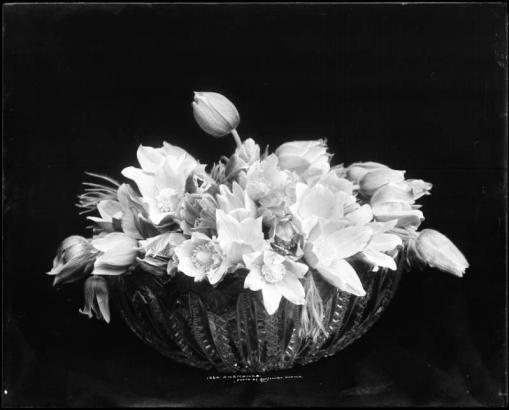
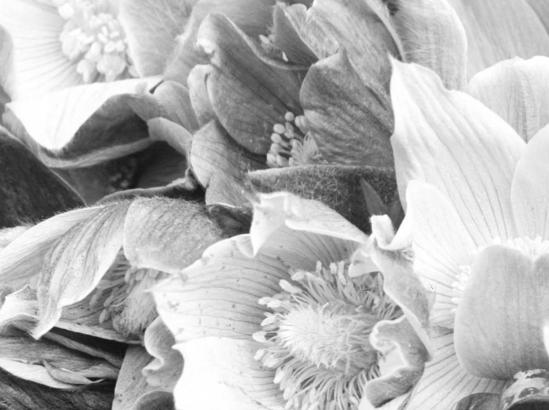
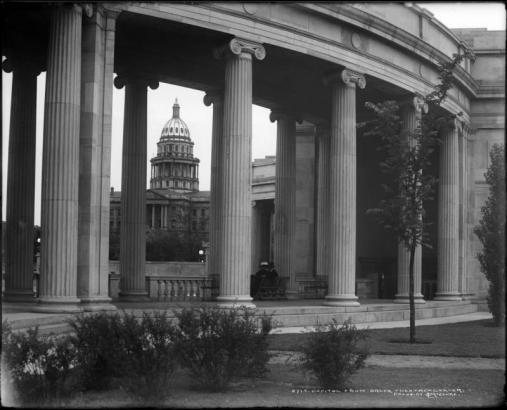


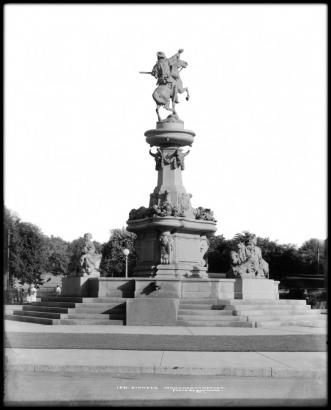

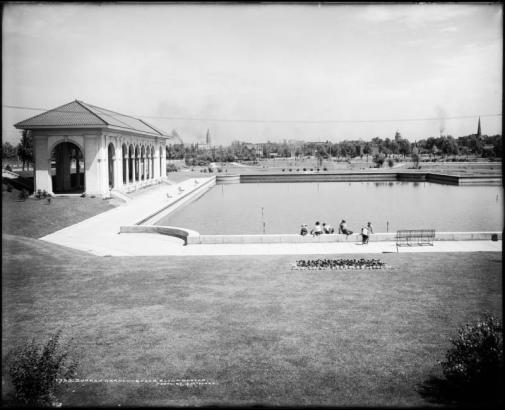
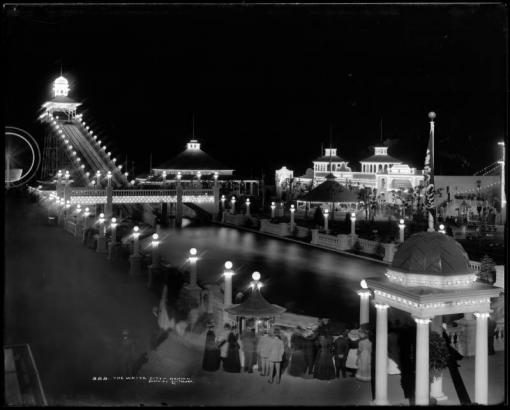
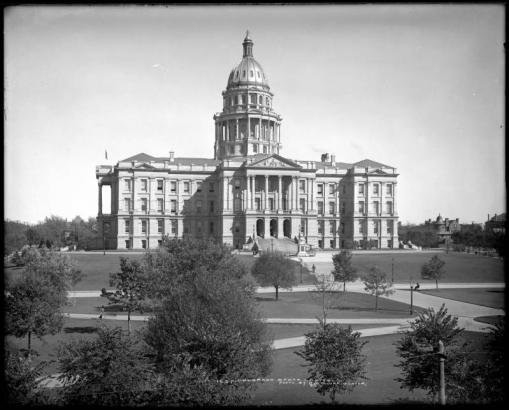
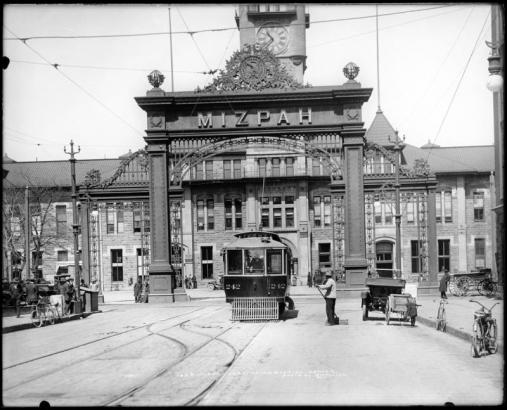
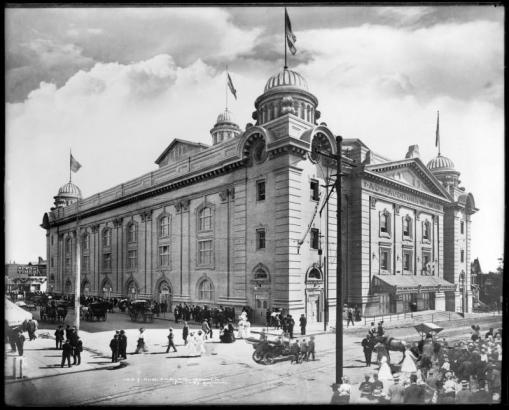
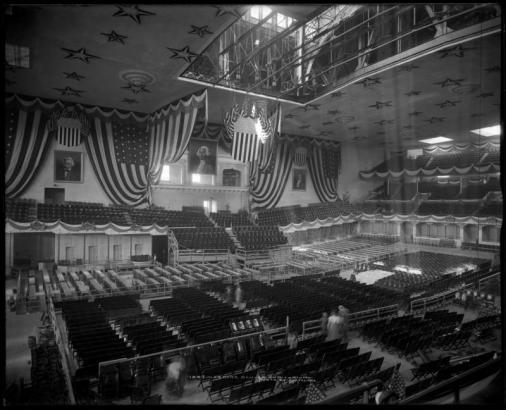

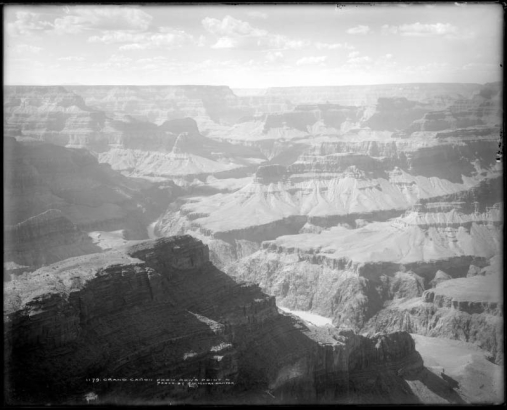
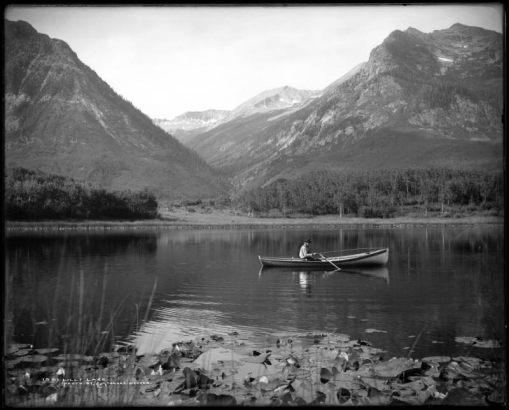
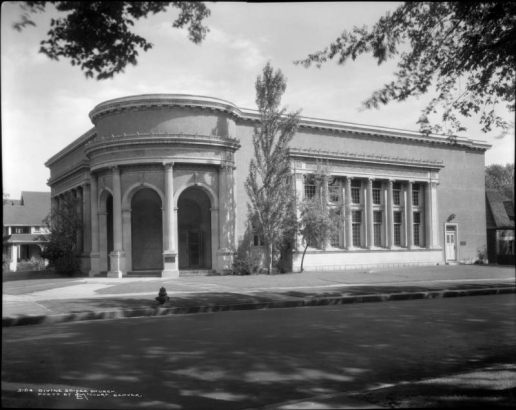
Comments
I have seven single weight
I have seven single weight prints by L.C. McClure that were my grandmother's. I have a hunch that my future grandfather might be standing in one of them, entitled "1341. Wheat Field - Norval Ranch - Moffat Road -" Photo by L.C. McClure, Denver. Please advise as to their value to your library collection.
Sincerely, Nathan Huber neighthuber@gmail.com 8-10-18
Add new comment